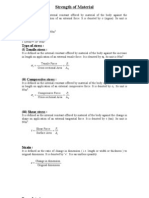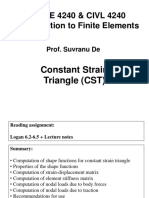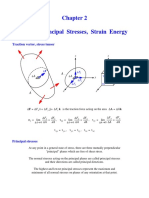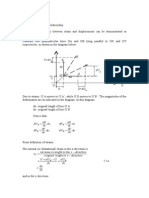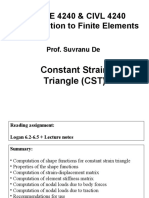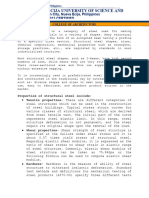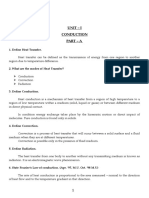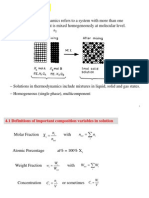0% found this document useful (0 votes)
21 views11 pagesFEM - Lecture 4 - Continuum Elements-Part III-Examples
The document discusses the evaluation of strain and stress components within a 2D triangular plane stress element using given coordinates and nodal displacements. It outlines the strain vector formulation, shape functions, and the stress-strain relationship, providing calculations for normal and shear strains. The results include specific values for strain and stress components based on the provided parameters.
Uploaded by
Anne SherinCopyright
© © All Rights Reserved
We take content rights seriously. If you suspect this is your content, claim it here.
Available Formats
Download as PDF, TXT or read online on Scribd
0% found this document useful (0 votes)
21 views11 pagesFEM - Lecture 4 - Continuum Elements-Part III-Examples
The document discusses the evaluation of strain and stress components within a 2D triangular plane stress element using given coordinates and nodal displacements. It outlines the strain vector formulation, shape functions, and the stress-strain relationship, providing calculations for normal and shear strains. The results include specific values for strain and stress components based on the provided parameters.
Uploaded by
Anne SherinCopyright
© © All Rights Reserved
We take content rights seriously. If you suspect this is your content, claim it here.
Available Formats
Download as PDF, TXT or read online on Scribd
/ 11









